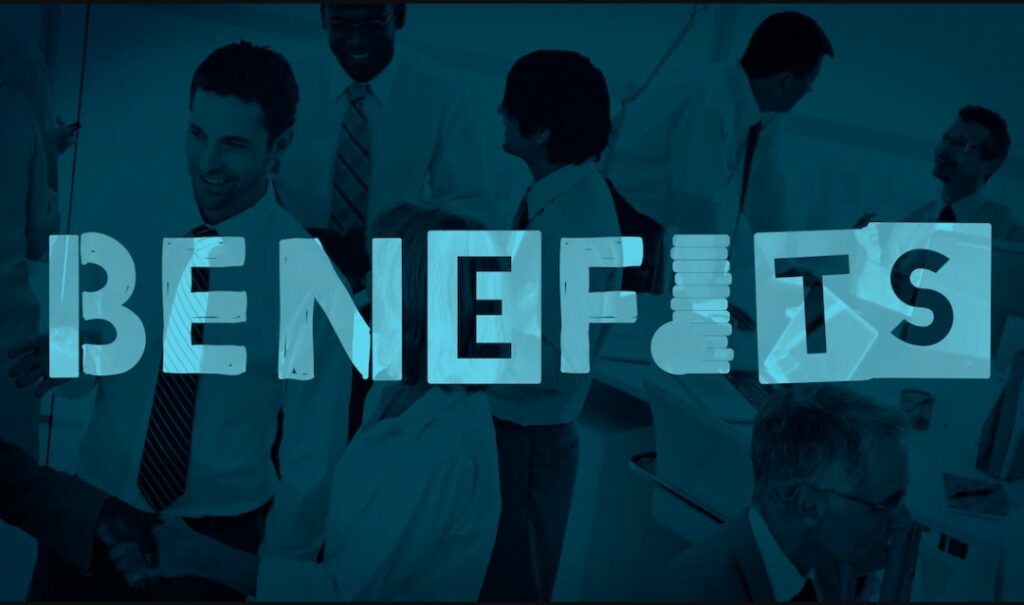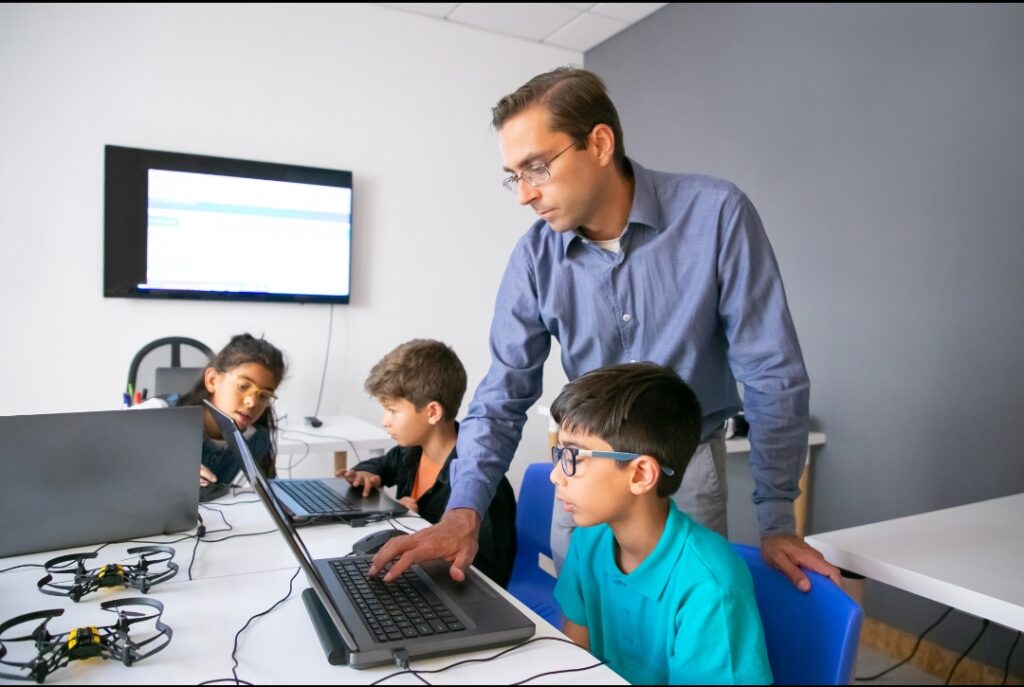The Future of Education: DCPS Blended Learning

Introduction
What is DCPS Blended Learning ? In this rapidly evolving world, traditional teaching methods are being supplemented and enhanced by innovative approaches. One such approach is DCPS blended learning, a cutting-edge educational model that combines the best of online and in-person instruction. This exciting method has gained widespread recognition for its ability to personalize learning, engage students, and empower teachers. So, get ready to dive into the world of DCPS blended learning and discover how it is revolutionizing education as we know it!
Advantages of DCPS Blended Learning
DCPS blended learning offers a range of advantages that can revolutionize the way students learn and teachers instruct. In blended learning, students can learn at their own pace and on their own schedule, regardless of whether they are in school or at home.
Another benefit is the personalized approach to education. Blended learning allows for customized instruction based on individual student needs and interests. This means that students can receive targeted support or enrichment activities tailored specifically to them.
In addition, blended learning promotes student engagement by incorporating technology into the learning process. Interactive online resources, multimedia content, and virtual simulations make lessons more interactive and captivating.
Furthermore, DCPS blended learning encourages collaboration among students through various online platforms where they can work together on projects, share ideas, and provide feedback to one another.
DISCOVER: 92career: Your Guide to Finding Your Dream Job
For teachers, blended learning offers powerful tools for tracking student progress and assessing their understanding. Online assessments allow for immediate feedback so that educators can quickly identify areas where additional instruction may be needed.
DCPS blended learning has numerous advantages including flexibility for both students and teachers, personalized instruction, enhanced engagement, collaborative opportunities, and efficient assessment methods.
By leveraging technology effectively in the classroom, we pave the way for a brighter future in education.
Benefits for Students and Teachers:

Students in DCPS blended learning programs enjoy several benefits that enhance their educational experience. Blended learning provides students with more personalized and self-paced learning opportunities. With online resources and content tailored to their individual needs, students can learn at their own pace and revisit challenging concepts as needed.
Additionally, the use of technology in the classroom helps students develop essential digital literacy skills that are becoming increasingly important. By using various digital tools and platforms, students can become proficient in navigating online resources, collaborating with peers virtually, and utilizing multimedia to enhance their understanding of complex topics.
Furthermore, blended learning fosters a more interactive and engaging learning environment for students. The integration of multimedia elements such as videos, simulations, and interactive activities captures students’ attention and makes lessons more enjoyable. This active participation facilitates deeper understanding and retention of information.
For teachers, blended learning offers valuable advantages as well. It allows educators to differentiate instruction based on each student’s unique needs by providing targeted interventions or extension materials through online platforms. This individualized approach helps teachers address gaps in knowledge effectively while also challenging high-achieving students.
Moreover, the use of data analytics in blended learning enables teachers to track student progress more efficiently. Real-time feedback from assessments conducted online allows instructors to identify areas where additional support is required promptly. This data-driven approach empowers teachers with actionable insights to adapt instructional strategies accordingly.
Additionally, incorporating technology into teaching practices saves time for educators by automating administrative tasks like grading assessments or tracking attendance records digitally. With these streamlined processes in place, teachers can focus on delivering quality instruction rather than being weighed down by paperwork.
DCPS blended learning holds immense potential for both students and teachers alike by enhancing personalization, engagement levels, and leveraging technology effectively.
Challenges and Limitations of DCPS Blended Learning

While DCPS blended learning offers numerous benefits, it is not without its challenges and limitations. One of the main hurdles is ensuring access to technology for all students. Not every student has a reliable internet connection or a device at home, which can hinder their ability to fully participate in blended learning activities.
Another challenge is the need for ongoing professional development for teachers. Implementing blended learning requires educators to have a solid understanding of how to integrate technology into their instruction effectively. Training and supporting teachers can be time-consuming and expensive.
Furthermore, some students may struggle to self-direct their learning or find it hard to stay motivated without face-to-face interaction with their peers and teachers, as they are used to traditional classroom settings.
Moreover, assessing student progress in a blended learning environment poses its own challenges.
Teachers must find ways to accurately measure student achievement while accounting for variations in online participation, completion rates, and technological glitches that may affect data collection.
Maintaining consistent communication between students, parents/guardians, and teachers can be challenging in a blended learning setting. Open lines of communication are essential for addressing concerns promptly and ensuring everyone remains informed about assignments, expectations, and progress updates.
Despite these challenges and limitations, many schools have successfully implemented DCPS blended learning models by developing strategies that address these issues head-on. By leveraging available resources creatively and providing ongoing support to stakeholders involved in the process – including families – we can overcome these obstacles together!
How to Implement DCPS Blended Learning in the Classroom
Implementing DCPS Blended Learning in the classroom can be a transformative experience for both teachers and students. Here are some practical steps to help you successfully integrate this innovative approach into your teaching:
1. Start with a clear plan: Before diving into blended learning, outline your goals and objectives. Determine how technology can enhance student engagement and meet their individual learning needs.
2. Provide professional development: Ensure that teachers have the necessary skills and confidence to navigate the digital tools used in blended learning. Offer training sessions or workshops to familiarize them with online resources and instructional strategies.
3. Choose appropriate technology: Select digital tools that align with your curriculum objectives and cater to different learning styles. Look for platforms that offer interactive activities, personalized feedback, and opportunities for collaboration.
4. Create a flexible schedule: Blended learning allows for flexibility in terms of time and location of instruction. Design a schedule that includes both face-to-face instruction and online activities, allowing students to work at their own pace.
5. Foster collaboration: Encourage peer-to-peer interaction through discussion boards, group projects, or virtual classrooms. This promotes critical thinking skills, teamwork, and social-emotional growth.
6. Track progress: Use data analytics provided by the digital platforms to monitor student performance and identify areas where intervention may be needed.
By implementing these strategies effectively, educators can create an engaging learning environment where students can thrive academically while developing crucial 21st-century skills.
Examples of Successful Programs Using DCPS Blended Learning

DCPS Blended Learning has been implemented successfully in numerous educational programs, revolutionizing the way students learn and teachers teach. One such program is the Khan Academy, a widely recognized online platform that offers personalized instruction to students of all ages.
Through DCPS Blended Learning, teachers can incorporate Khan Academy into their classrooms to supplement traditional instruction. Students can access a plethora of resources including videos, practice exercises, and quizzes that cater to their individual needs and pace of learning. This allows for a more personalized approach where each student can progress at their own speed.
Another successful example is Summit Public Schools. They have embraced DCPS Blended Learning by using an online platform called Summit Learning. This platform provides students with personalized lesson plans based on their interests and strengths while also allowing them to track their progress throughout the year.
KEEP READING: Ryabe Reviews
Incorporating technology into education through DCPS Blended Learning has proven beneficial not only for traditional classroom subjects but also for specialized areas such as language learning. Duolingo is an example of how blended learning can be used effectively in foreign language classrooms. By combining computer-based lessons with teacher-led activities, students are able to engage in interactive language practice that enhances both speaking and writing skills.
These examples demonstrate the flexibility and effectiveness of DCPS Blended Learning in various educational settings. By leveraging technology alongside traditional teaching methods, educators are able to create dynamic learning environments where every student can thrive. Whether it’s through platforms like Khan Academy or innovative approaches like Summit Public Schools’ personalized curriculum, these successful programs showcase the potential of blended learning in shaping the future of education.
Conclusion
In this ever-evolving world, education needs to keep pace with the advancements in technology and adapt to new learning methodologies. DCPS blended learning is one such approach that holds immense potential for transforming education.
Blending online and offline components, DCPS blended learning offers a personalized and flexible learning experience for students, catering to their individual needs and allowing them to learn at their own pace. By leveraging technology tools and resources, teachers can enhance their instructional practices and provide targeted support to each student.
The benefits of DCPS blended learning are numerous. It promotes active engagement, collaboration, critical thinking, problem-solving skills, and digital literacy among students. Moreover, it allows teachers to gather real-time data on student progress for more informed decision-making.
While there may be challenges associated with implementing DCPS blended learning – such as access to technology or training for both educators and students – these obstacles can be overcome with proper planning and support from administrators.
Successful programs like those implemented by District of Columbia Public Schools (DCPS) have showcased the positive impact of blended learning on student outcomes. These programs have demonstrated improved academic achievement, increased graduation rates, enhanced teacher-student interactions, and greater student motivation.
As we look towards the future of education, dcps blended learning will undoubtedly continue playing a crucial role in shaping how knowledge is imparted and acquired. With its abilityto personalize instruction, foster collaboration, and preparestudentsforthe demands of a rapidly changing world, it has the potentialto revolutionizeeducation systemwide.




